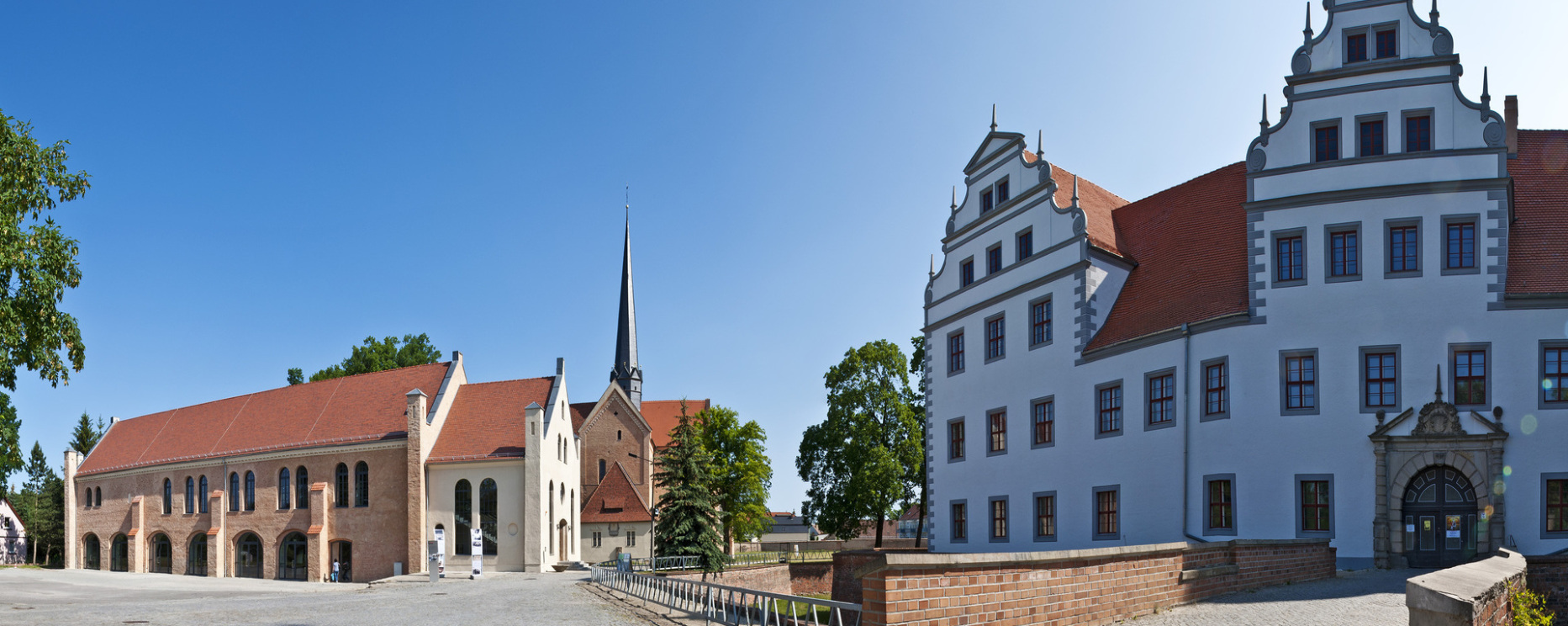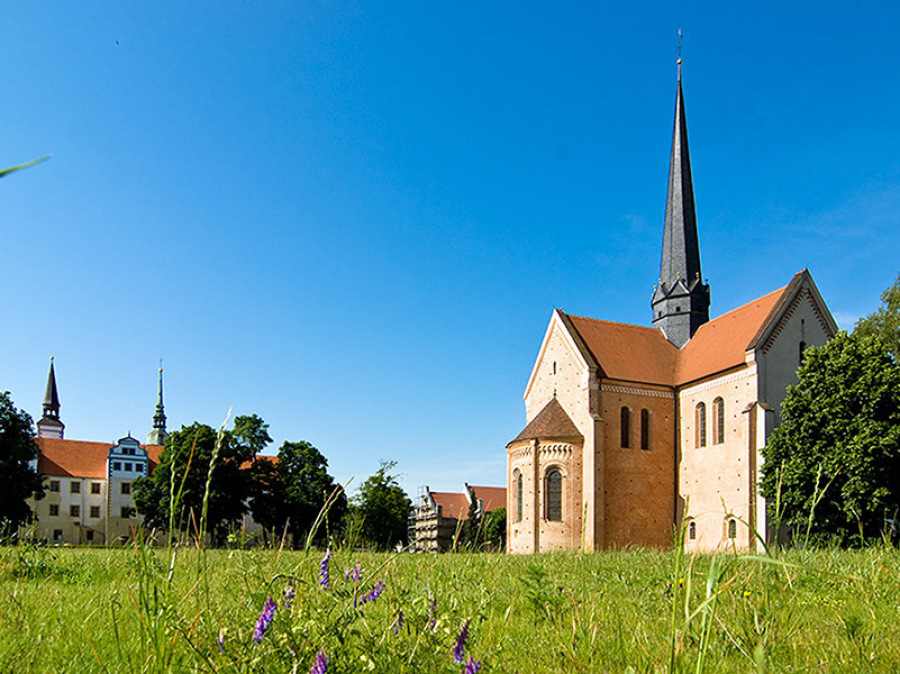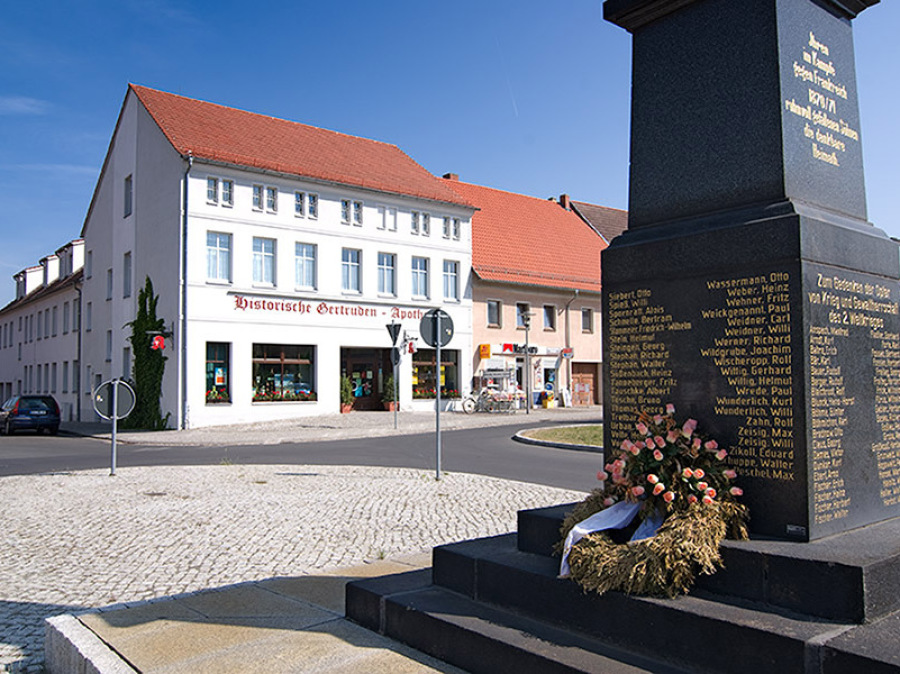Doberlug-Kirchhain
Die Stadt Doberlug und ihre Umgebung
Mit der Ausrichtung der Ersten Brandenburgischen Landesausstellung 2014 rückt die Stadt Doberlug-Kirchhain ins Rampenlicht der Kulturtourismus. Das in den letzten Jahren sanierte Gebäudeensemble aus
Klosterkirche, Schloss und Refektorium sowie die barocke Planstadt spielen unter dem Leitthema: „Sachsen und Preußen. Szenen einer Nachbarschaft“ eine zentrale Rolle. Doberlug war im 17. und 18.
Jahrhundert Nebenresidenz der sächsischen Herzoglinie Merseburg-Sachsen. Im Zuge des Wiener Kongresses 1815 wurde die Region an Preußen abgetreten. Doberlug-Kirchhain steht damit beispielhaft für den
Übergang von sächsischer zu preußischer Tradition. Die weltweit erste kulturhistorische Ausstellung wird die spannungsreiche Beziehungsgeschichte der Nachbarländer Preußen und Sachsen erzählen.
Den Grundstein für das heutige Schlossareal legten Zisterziensermönche, die sich um 1200 in Doberlug ansiedelten. Die Dörfer mit ihren Kirchen in der Umgebung von Doberlug-Kirchhain sind Zeugnisse
zisterziensischer Siedlungskultur. Jede einzelne Dorfkirche ist ein Besuch wert, weil sie auf ganz unterschiedliche Weise die kultur- und kunsthistorische Geschichte der Region erzählen.
Die Landschaft und das Leben in der Region sind durch den Braunkohletagebau im 19. und 20. Jahrhundert geprägt. Das Erlebnis Industriekultur spielt darum in touristischer Hinsicht eine ganz besondere
Rolle. Wir haben etwa mit der F60, der größten Abraumförderbrücke Europas, eines der bedeutendsten zugänglichen Industriedenkmale. Weitere Informationen dazu finden Sie auf der Internetseite unseres
Tourismusverbandes Elbe-Elster.
The town of Doberlug and its environs
When the First State Exhibition of Brandenburg was held in 2014, it shone a spotlight on the town of Doberlug-Kirchhain as a destination for cultural tourism. The ensemble of buildings which
comprised the recently restored abbey, chateau and refectory, and the baroque planned town itself, played a key role in the exhibition entitled, ‘Prussia and Saxony. Scenes from a Relationship
Between Neighbours.’ Doberlug was a secondary residence of the Saxon Dukes of Saxe-Merseburg in the 17th and 18th centuries. In 1815, the region was ceded to Prussia during the Congress of Vienna. As
a result, Doberlug-Kirchhain is a fine example of the transition from Saxon to Prussian traditions. The first cultural-history exhibition in the world told the fascinating story of the relationship
between the neighbouring states of Prussia and Saxony.
It was Cistercian monks who laid foundations in what is now the chateau area, after settling in Doberlug in 1200. The villages and their churches in the area around Doberlug-Kirchhain bear
testimony to the settlement practices of the Cistercians. Each individual village church is well worth a visit, because they all tell the cultural, artistic and historical story of the region in very
different ways.
The mining of brown coal had an impact on the landscape and on life in the region in the 19th and 20th centuries. As a result, industrial culture plays a very special role in terms of tourism. The
F60, the largest overburden conveyor bridge in Europe, is one of the most important industrial monuments which can now be accessed by the public. You can find more information about it on the website
of Tourismusverband Elbe-Elster.
Inspiration
Kontakt und Reservierung / Contact and reservation
+49 (0)35322 512130
Verfolgen Sie unsere aktuellste Arbeit in der Fashion-Branche.
Quartier Rautenstock GbR
Städtebaulich gesehen, ist der Gasthof
von großer Bedeutung. Der Rautenstock
ist gewissermaßen das architektonische Markenzeichen der Stadt.
The hotel is of great significance in the history of urban development. The Rautenstock is in some ways the town’s architectural landmark.








